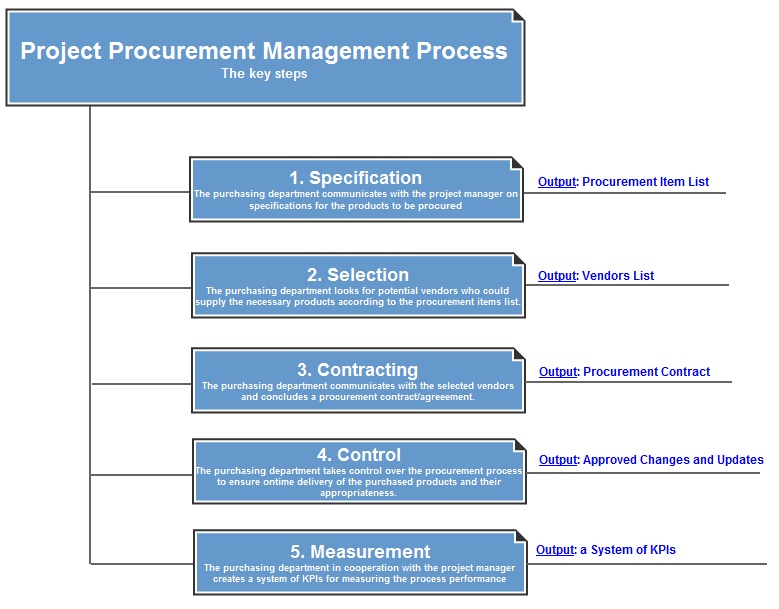Task Management Checklist
 Perhaps, it is hard to overestimate the value of better task management. When you know how to plan, do, check and report your tasks, you get a higher chance for success because the tasks are managed with a consistent approach you’ve chosen. The following Task Management Checklist is designed to help you determine such an approach. We wanted to give a list of the most important recommendations on better management of tasks. Hope it will be helpful. Your comments and feedback are welcome.
Perhaps, it is hard to overestimate the value of better task management. When you know how to plan, do, check and report your tasks, you get a higher chance for success because the tasks are managed with a consistent approach you’ve chosen. The following Task Management Checklist is designed to help you determine such an approach. We wanted to give a list of the most important recommendations on better management of tasks. Hope it will be helpful. Your comments and feedback are welcome.
1. Classify Tasks
Your first step to better task management is to determine an amount of work to be completed in order to reach your purpose. For example, your purpose is to install a new computer system in your office. This will be a project that consists of various simple tasks. Now you need to classify those tasks or define types of job to be done. Use the following task management checklist to classify the tasks of your project:
- Define what goals and objectives your project should complete.
- Create a statement of work (SOW) for the project.
- Determine the project scope, including boundaries (what’s in and out of the work), assumptions and constraints.
- Decompose the entire amount of work into a number of simple, more manageable pieces, such as jobs and tasks.
- Consider using a WBS (Work Breakdown Structure) as a model of work decomposition.
- For every task of the decomposition, define the key elements, such as:
- Title – this element defines headings and names of your tasks.
- Description – it specifies some additional information and supplements for the tasks.
- Body – the central element that elaborates methods and techniques for task implementation.
- Break all the tasks down into groups depending on the key elements.
- For every task having similar or the same content in the elements, create dependence on another task having the same or similar parameters.
- Finally, classify all the tasks into categories.
2. Set Milestones
It’s impossible to define success of a task without using some measures that help compare current status of the task against the baseline. Milestones serve as a wonderful measurement mechanism for evaluating task progress and making decisions on efficiency. Take these steps of the task management checklist to set milestones:
- Design a schedule for your project.
- Identify the key phases of the implementation process.
- Link every phase to appropriate events associated with appropriate tasks classified.
- Define an amount of time required for completing every event within a certain phase.
- Determine those events having the greatest significant to successful implementation of each phase.
- Group those events into the critical chain (here you can use the theory of buffer management and other tools of the CCPM methodology – Critical Chain Project Management).
- For every critical event, create a marker on the schedule. They will be milestones of your project.
3. Prioritize the Jobs
Now it is time to determine the execution order or how your tasks should be executed during the project implementation process. Task execution order is a desired sequence of tasks that are performed one by one or in parallel, according to preset priorities. Use the following task management template to prioritize activities of your project:
- Define those tasks having the highest significant to success of the project as a whole and related tasks in particular.
- Use the milestones and associated critical events to find out what tasks are linked to the milestones.
- Examine other tasks and try to organize them into three groups depending on significance.
- Now you have fours groups (the first includes tasks linked to the milestones, the other three include the rest of tasks.). Create a prioritization matrix using the groups.
- Assign one of the four types of priority, such as Urgent, High, Normal and Low, to every task.
- Use the matrix to prioritize your tasks.
4. Manage Collaboration
When your tasks are ordered and prioritized now you can plan for those people who will perform the tasks. First you need to acquire and assemble a team and then share and assign the tasks to team members having appropriate skills and competencies. Complete the following items of the task management checklist to manage collaboration:
- Make a list of skills and faculties for candidates to your team.
- Organize interviews with candidates
- Interview every candidate and select those having the most complete set of skills and faculties required for your project.
- Assemble a team
- Plan for a kick-off meeting to describe your project and let your team know the tasks they must do.
- Assign the tasks to your team members.
- Use a task management program to let your team collaborate in real time and virtually.
- Use the program to share documentation, communicate with your team and get their feedback of the project.
- Engage your people in doing the tasks. The project is started for implementation.
5. Track Status
Your tasks have been assigned to your team so the work process of your project can be started. Now it is time to check status of every job and make appropriate amendments or apply corrective actions in case there’s some gap or variation appears. We suggest using this task management template to track status:
- Use your schedule to view markers that symbolize the most important events of your project, that’s milestones.
- Hold meetings with team leaders and the inter team to discuss outstanding issues and generate solutions.
- Schedule regular reviews and checks of the implementation process.
- Use your task management software to receive team feedback and give suggestions and recommendations in real time.
- In case there’re some tasks having later delivery and failed, find those tasks in your schedule.
- Create a corrective plan of actions to address the issue.
- Use delegation of authorities and re-assignment as ways for resolving the problematic tasks.
6. Report on Results
Finally, it is time to review your tasks and report on the results received as your project has been done. You need to create a report showing how the tasks have been performed, what issues have been addressed, and whether the project has been delivered as planned. Take the following steps of the task management checklist to report on the results:
- Examine status of every phase and make sure there’re no tasks remaining.
- In case there are, allocate additional time and resources to fill the gap and complete the remaining tasks.
- Get status reports from team leaders.
- Examine the reports and be sure every is finally completed.
- Evaluate every report and find out if goals of the project have been accomplished.
- Create a report summarizing the end of the project.
- Hold a meeting with your team and announce about success of the project.
- Plan for celebration. Reward those people who showed high performance during the implementation process.













